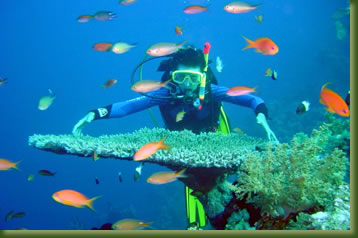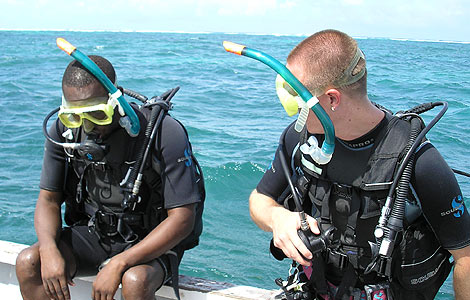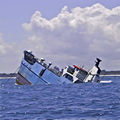Mombasa Diving Adventures
With the world’s second largest barrier reef and whale sharks to be found off the Kenyan coast, diving in Mombasa is a spectacular sport. Between Shimoni in the South and Malindi in the northern coast, there is a string of national marine parks offering a wealth of opportunities for scuba diving and snorkeling and the chance to swim with thousands of varieties of tropical fish including manta rays and marine mammals.

Mombasa Diving
There is wreck diving, drift diving, wall diving and diving with sharks. A variety of marine life can be observed at depths between 35-70 feet, which is a comfortable depth for most beginners. The better marine parks for diving are at Wasini Island south of Mombasa and at Malindi and Watamu, to the north.
Diving in Mombasa is best during between October to March but in June, July and August visibility is poor due to the silt flowing into the ocean from the rivers on the coast. There is also a movement to protect the reefs and environmental friendly moorings have been installed to avoid further damage to the coral when boats drop their anchors.

Scuba Diving Mombasa Scuba Diving Mombasa
If you are not certified for scuba, almost every hotel or resort along the coast has certification courses for open-water diving. Some even offer a couple of free lessons in the pool before heading for the dive sites.
To the north-east of Mombasa is Mtwapa where a dive site named Shark Point 2 abounds with moray eels, turtles and between one to ten white-tipped sharks which are hunting for food along a ridge. A dive between 35-85 ft, this is open to divers of all experience.

M.V. Dania Ship Wreck
The best spot for wreck scuba diving is the MV Dania site. Divers can explore at shallow water 40 ft below the surface to see the bridge, hull and deck, while advanced divers can plunge to the depths. The wreck is home to large colonies of eels, barracudas, groupers and batfish.
When you dive between September and October and January and February, there is every chance of spotting the whale sharks. These gentle creatures, which can weigh up to 6 tons and can be as much as 40 feet in length, come to feed in the plankton-rich ocean. Dive boats stop at a respectable distance from they are spotted and divers enter the water at that point. Contact with the whale sharks is prohibited.
Vuma Caverns is a site where whale sharks are likely to be spotted. However, this dive site, which is a must for the serious diver, also has caves and blow holes which can be explored at relatively shallow depths with turtles, groupers, snappers, reef sharks and other large tropical fish as company.
Mushroom offers drift diving and is named after the large coral shaped like a mushroom found at the start of the dive. Keen underwater photographers will enjoy the chance to capture scorpion fish and moray eels on film.
Diving is a wonderful sport available to scuba-divers of all levels of experience. The Malindi-Watamu National Park is home to 100 species of hard coral, the most easily recognizable of which are the mushroom corals which can grow up to 12-15 feet wide. Schools of parrotfish, surgeonfish, snappers, angelfish and butterfly fish offer create color and excitement for a memorable dive adventure in Mombasa.


 KES 14,350 PPS
KES 14,350 PPS

 KES 12,600 PPS
KES 12,600 PPS 



